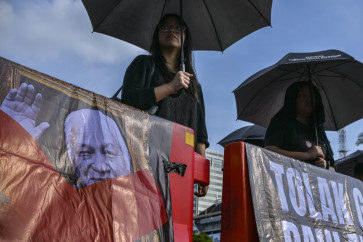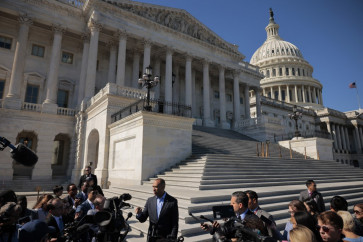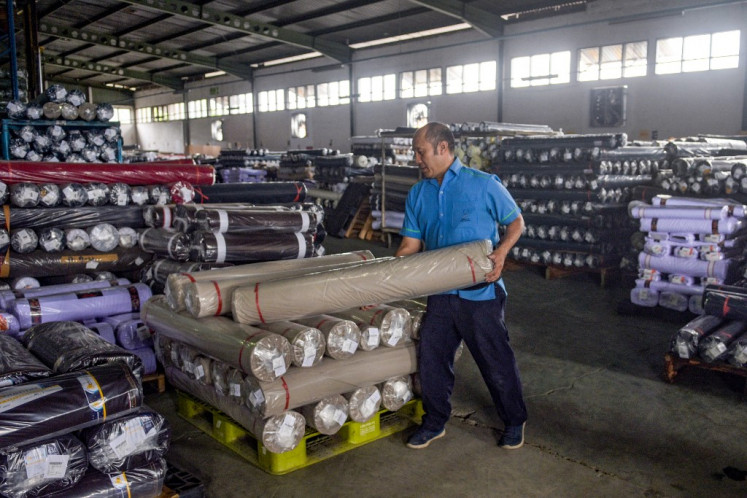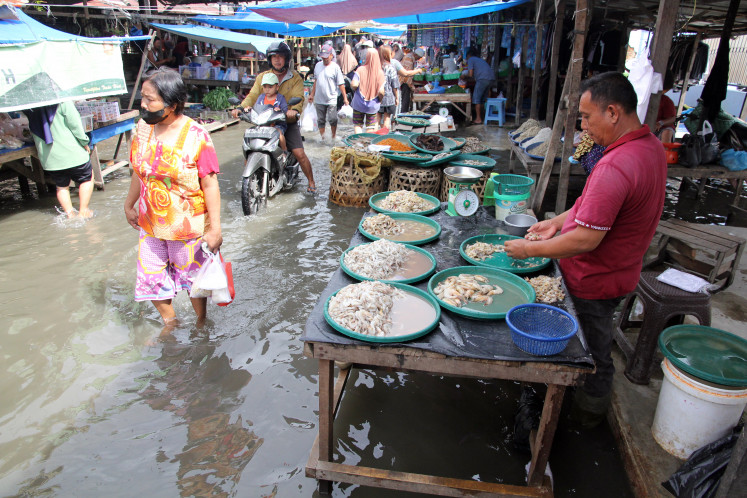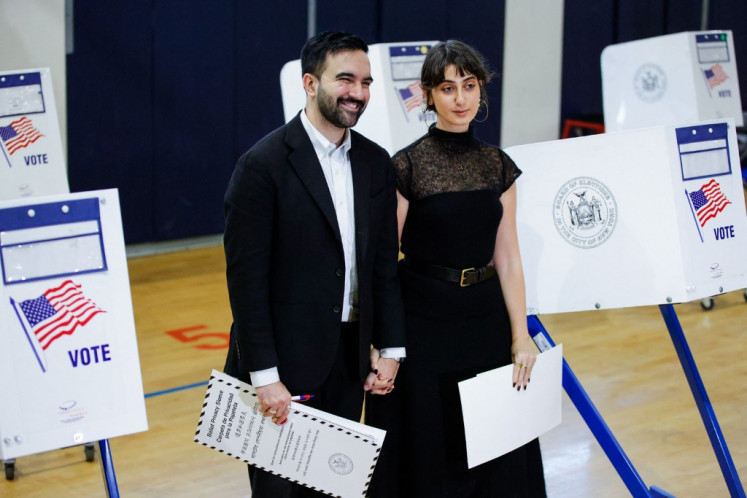Popular Reads
Top Results
Can't find what you're looking for?
View all search resultsPopular Reads
Top Results
Can't find what you're looking for?
View all search resultsIndigenous ink Iban pride
Tattoo artist Herpianto Hendra is probably the only member of the Dayak Iban tribe who currently uses the hand-tapping method in Yogyakarta
Change text size
Gift Premium Articles
to Anyone
Tattoo artist Herpianto Hendra is probably the only member of the Dayak Iban tribe who currently uses the hand-tapping method in Yogyakarta.
People can easily identify Hendra by his head-turning ukir rekong tattoo on his throat ' something that he is proud of it.
'No one can better preserve a culture than an indigenous person,' he said.
Growing up in Kapuas Hulu regency, 18 hours from Pontianak, the 27-year-old artist began to develop an interest in art and modern tattooing in 1997. Hendra eventually graduated from the Indonesian Institute of the Arts in Yogyakarta, focusing on cultural and tribal studies.
'I realized that the education given was too Java-centric. So I went home and explored Iban culture myself.'
In 2010, Hendra attended the Florence Tattoo Convention in Italy to showcase the traditional technique, as well making stops in Philippines and the Gathering of the Tribes expo of Sarawak's indigenous people, tattoo artists and the general public in Malaysia.
Now, he works out of his home studio in Bantul, Yogyakarta.
A branch of Dayak tribe in West Kalimantan, the Ibans had a fearsome reputation for practicing headhunting and recorded their exploits through hand-tapping tattoo, especially tattoos that were used to denote their reputations and protect them from enemies.
According to the artist, a spirit usually comes to an Iban in a dream before he gets a traditional tattoo. After, he would consult it with elders so they could create a particular tribal Dayak shape that matched with his dream.
Hendra said that the ukir rekong was something that distinguished the Iban from other Dayak tribes.
He still remembers the moment he asked his grandfather about getting the tattoo on the front of his neck.
'My grandfather told me, 'why not?' But for me as an Iban, asking permission is how I show my respect to the elders, but for outsiders, it is not required.'
He said that many Iban elders used to refrain in passing their cultural knowledge to the younger generation during the New Order due to government rules that forbade public servants from having tattoos.
As the oldest child, however, his family encouraged him to pursue his passion for art, especially tattooing ' something which his two younger sisters are not interested in.
'It was difficult in the New Order era,' Hendra recalled. 'My father was a soldier and he said there were lots of 'Petrus' who disliked people with tattoos.' The term is an abbreviation of penembakan misterius, which literally means mysterious killings, a reference to the politically connected killings of the era.
Hendra continues. 'Today, the prejudice still remains, but people are more open [to the practice].'
It was not until 2008 that he decided to delve deeper into the philosophy behind the Iban's tattoo tradition, designs and techniques.

Recognizing that the tattoos are still sacred, Hendra says that the culture of the Iban needs to be passed on.
'For us, we are happy when people appreciate by learning what we have and even getting our tattoos.'
The hand-tapping process is not simple. The traditional technique, which takes several hours to complete, requires a hammer, wooden staff, bamboo needles and ink. For the person who is being tattooed, this method of pointillism is less painful compared to machine tattooing, but it takes twice as long.
'For the artist, it requires focus and patience,' he added.
Hendra says that he will charge around Rp 1 million per hour for tattoos done through the hand-tapping method, which is about half the price of the machine version.
He used to charge less for tattoos made traditionally, but no one was interested.
Hendra says that he typically uses mass-produced, which is thicker than its traditional counterpart. However, he notes that traditional ink has unique black and dark blue hues that come from soot and sugarcane used during the water mixing process to make the pigment.
It takes four hours for him to finish a pair of bunga terung tattoos, each with a diameter of nine centimeters. The bunga terung, or eggplant flower, is the most popular Dayak motif. It also indicates manhood.
'For the ukir rekong, most of the people who dare to have it are bule ' Caucasians. I don't know why they value traditional tattoos more than our people.'
On the specialty conventions that he's been to, Hendra says that getting a traditional tattoo is expensive and frightening for Indonesians, yet foreigners usually think it's challenging and unique.
'For us Dayak, tattooing is our 'life album'. We get them in several stages. I know for some people it is not the same, but I hope our art and cultural education can document us so that Indonesians know our story.'
Photos by Banyubening Prieta




